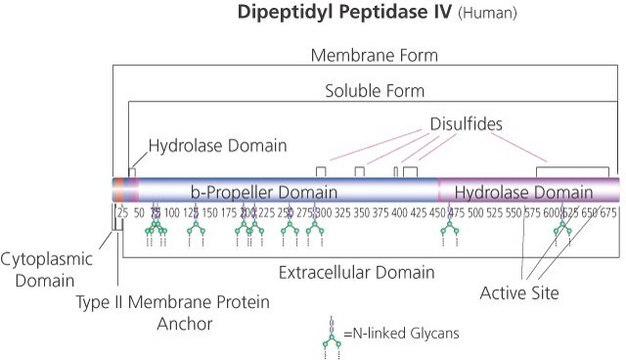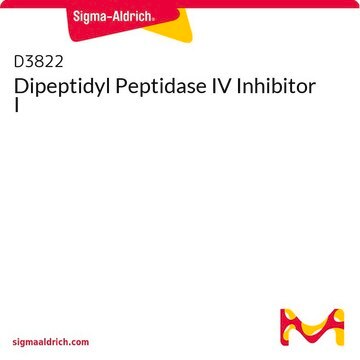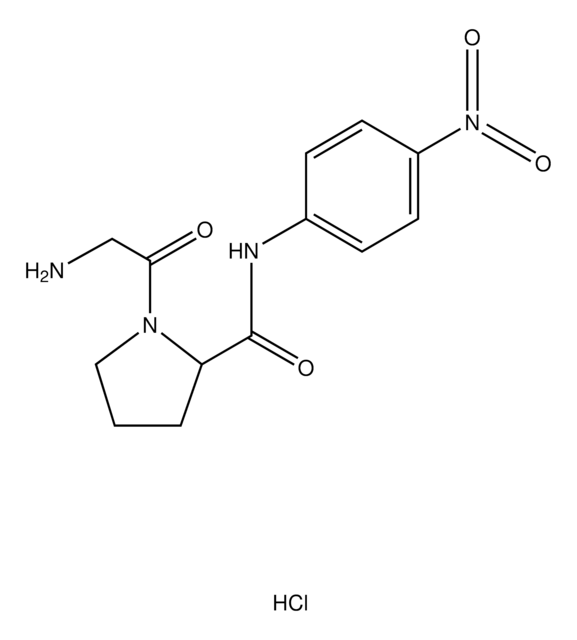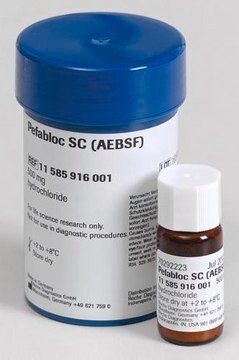DPP4-M
DPP IV Inhibitor
Synonym(s):
DPP IV Inhibitor, Dipeptidyl peptidase 4 Inhibitor, Gliptins
Sign Into View Organizational & Contract Pricing
All Photos(1)
About This Item
UNSPSC Code:
41116012
eCl@ss:
32160405
NACRES:
NC.07
Recommended Products
form
solution
Quality Level
NCBI accession no.
UniProt accession no.
Gene Information
human ... DPP4(1803)
General description
Dipeptidyl peptidase IV (DPP IV), a dimeric type II integral membrane glycoprotein, is a member of the family of prolyl-specific proteases. It is abundantly expressed in the epithelial and nonepithelial tissues. It is highly expressed in the kidney and the colon.
Application
Research Category
All
All
Biochem/physiol Actions
Dipeptidyl peptidase IV (DPP IV) controls insulin-stimulating hormones, glucagon-like peptide (GLP-1), and glucose-dependent insulinotropic polypeptide (GIP). It′s a promising therapeutic target for type 2 diabetes (T2DM). In addition to its catalytic action, DPP-4 also serves as a binding protein and a ligand of extracellular factors. DPP-4 inhibition causes GLP-1 and GIP to have a prolonged activity, hence DPP-4 inhibitors help maintain glucose homeostasis. DPP IV inhibitors can improve glycemic control for a longer period when compared to early oral hypoglycemics.
Storage and Stability
Upon arrival, store at 4°C. For long-term of more than 2 weeks, store at –20°C.
Certificates of Analysis (COA)
Search for Certificates of Analysis (COA) by entering the products Lot/Batch Number. Lot and Batch Numbers can be found on a product’s label following the words ‘Lot’ or ‘Batch’.
Already Own This Product?
Find documentation for the products that you have recently purchased in the Document Library.
Customers Also Viewed
Sebastiano Bruno Solerte et al.
Acta diabetologica, 57(7), 779-783 (2020-06-09)
SARS-CoV-2 causes severe respiratory syndrome (COVID-19) with high mortality due to a direct cytotoxic viral effect and a severe systemic inflammation. We are herein discussing a possible novel therapeutic tool for COVID-19. Virus binds to the cell surface receptor ACE2;
Our team of scientists has experience in all areas of research including Life Science, Material Science, Chemical Synthesis, Chromatography, Analytical and many others.
Contact Technical Service







